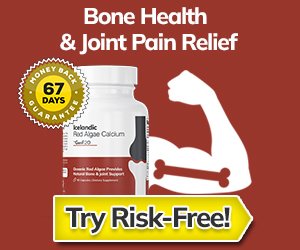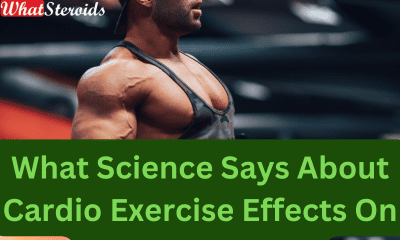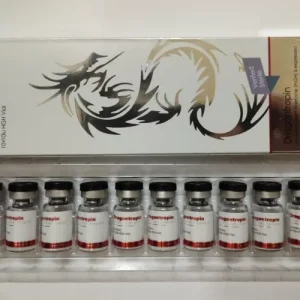Steroids
How To Optimize Recovery For Maximal Muscle Growth?

Introduction
First, we will tell you why recovery matters so much, especially if you are a natural for maximal muscle growth. Then, we will give you some tips on how to optimize it, and lastly, a few supplements that can help you achieve your goals. Stay tuned!
Why Do You Need Recovery for Maximal Muscle Growth?
The process of muscle building is simple in theory: you lift weights, which causes micro-damage to the muscle fiber. Then, protein synthesis starts happening, and your body heals the damage, at the same time making the muscle bigger and stronger.
Obviously, for this to happen, you need to exercise, you need protein, and you need to rest as the process only gets triggered in the gym, but the muscles grow while you recover.
This process of repairing the damage lasts 24-48 hours post-workout, depending on many factors such as muscle groups affected, training intensity, current fitness level, etc.
The Dangers Of Overtraining
Athletes and gym fanatics often make a mistake by having following the "one more rep!" approach, always trying to force themselves to do more. That kind of mindset looks at recovery as something subhumans do, which can often lead to overtraining.
The obvious risk of overtraining is not letting your body fully recover from the damage, which can have many negative effects all over your body. These range from injuries, suboptimal gains, but can also affect your immune system, neurological issues, mood changes, and endocrinological changes. The overtraining syndrome is a real issue and is something you don't want to mess with.
But, that doesn't mean that you will become overtrained if you chain 3-4 workouts in consecutive days. Overtraining develops over a prolonged period of high volume + high intensity activities.
If you notice that you are becoming lethargic, stressed, anxious, that your immune system is weaker, or that you are losing sex drive, loss of appetite, and are continually feeling sore, it is probably time to slow down.
Body Parts Matter Too
When talking about gym workouts that are aimed towards hypertrophy and strength, it is important to note that the 24-48h rule of rest between workouts is important only when working one body part. However, training the opposite (antagonist) body part won't cause overtraining. This is why you often have Push/Pull workouts, or body part splits such as Chest/triceps-Back/biceps-Legs/shoulders/abs, and similar. By manipulating your training this way, you are still giving each of your body parts an adequate 24-48 hour rest between workouts, which will allow optimal growth.
And remember, compound movements that involve the hip joint (squats and deadlifts, and their variations), as well as pullups and presses tax the body much more than isolations that only target one muscle group. Therefore, never train squats and deadlifts on consecutive days, and if you can, put them at least 3-4 days apart. Monday for deadlifts, Friday for squats.
It Is Important To Have Off Days
Although you can arrange your workouts so that your body parts are activated interchangeably, there's one thing that is always on - your CNS. When working out hard every day, your body gets taxed a lot, as it has to go through the recovery process over and over again. To make sure it does recover fully, it is essential to have at least one day off every week. Only one day is an option if you are following a classic "bro split," where you only focus on one muscle group per day. But, if you are training several groups, two days per week off might be a better idea. If you are training full-body, you should do it three times per week, with four off days.
Of course, nothing is set in stone, these are recommendations for most people. But, it is best to stick to them and see how you feel and then adjust accordingly.
Don't Forget To Recover Between Sets
Recovering between sets will allow your muscles to perform optimally and enable you to reach your goals faster. There are different theories, and rest times between sets differ based on your goals. If your goal is strength, you should aim as long as you need to between sets, as you are going to try singles anyway. Therefore, 3-5 minutes, or even more, between sets is not unusual.
If you are training for size, you are usually somewhere in the 8-12 rep range. That means you are using less weight, but are still going reasonably heavy, and close to failure. In this case, resting 2-3 minutes is optimal.
If you are training for endurance or looking to lose fat via weight training, you are probably doing higher reps with lighter weights. If that is the case, 1-2 minutes between sets is enough. Or, you can choose two opposite exercises and do supersets, one after another.
8 Hours Of Goodness
People, you need to worry about your sleep schedule, just as much as you worry about your workout programs. There's no going around it, if you lack sleep, your gains will suffer.
Sleep is responsible for energy levels, of course, and if you are drowsy, your workout quality will drop. But, sleep also has essential roles in normal hormone production. Fail to sleep enough, and you will start gaining fat, even if you are not in a surplus. Also, HGH is released during sleep, which is another important factor in muscle growth.
Related Article:: The Importance of Sleep for Bodybuilders
How much sleep is enough? You already know that 8 hours is optimal for most people. There are exceptions, of course, but most will need 7-8 hours of quality sleep. If you can't do it all at once during the night, it is OK to have an afternoon nap, as long as you reach your goal. Just remember to have an afternoon and not an evening nap, as it can mess with your night sleep if you do it too late.
Tips To Optimize Sleep:
- Have a sleep schedule, and try to go to bed and wake up at the same time, whenever possible
- Don't drink coffee, pre-workouts, or anything caffeinated 6 hours before bed
- Sleep in a dark and quiet room, use dark curtains, eye covers, and earplugs if you have to
Feed Your Muscles during Recovery
To grow muscle, you need exercise, and you need protein. Muscles are built in the process of protein synthesis, therefore, this macronutrient is essential.
Whey protein is always the best choice if you are aiming to increase your protein intake through supplementation. Whey has the best absorption and will go to the muscles very quickly.
Find it Whey ➢ HERE
If you need something that is going to feed your muscles slower, but over a longer period, Casein protein is your best choice. This is a classic "slow" protein that is most often used before sleep, to give the necessary aminos to your muscles while you sleep. Of course, if you are vegan, or you just can't tolerate dairy products, plant proteins are a good option too. They will give you all that you need and are usually organic and free of toxins.
Eat Carbs Too
Many gym bros often treat carbs like enemies, as they think carbs ruin those hard-earned abs instantaneously. Yes, it's true that most junk food like candy and soda is filled with sugar, but that doesn't mean carbs are bad. It only means that junk food is junk.
Find it Orgain ➢ HERE
But, when you work out super hard, your body's glycogen gets depleted, which is the main fuel used for highly intensive activities. Glycogen is a form of sugar that is available in the muscles themselves and is used first during the intense activities, as it is already there. So, the best way to refill your glycogen reserves is to eat carbs, which will make sure your body is fully ready for your next hardcore session.
Read more about:: How To Bulk Up Without Getting Fat
Up Your Caloric Intake
This one is not for everyone, but, in some cases upping your caloric intake is worth considering. If you are training super hard, going very heavy and doing it frequently, this can cause a caloric deficit on its own. So, if your plan is to lose weight and you are in a deficit anyway, this can be too much. Therefore, if you are feeling lethargic, or especially achy, it is a good idea to up your calories on non-workout days, so that you can recover well. Also, if you want to go extra hard, upping your carbs on workout days will give you the necessary kick.
Find Casein ➢ HERE
Incorporate Light, Non-Lifting Days
We know that you are hardcore, but if you want to avoid overtraining, you should plan some light days into your schedule. These can be anything from taking a walk, a slow-paced bicycle tour, stretching and foam rolling, going for a swim, or signing up for a yoga class. Anything that is low-intensity but promotes circulation is a good option, as the blood flow will help the muscles heal up better. Plus, you are probably very tight anyway, and doing some yoga poses won't kill you.
Use Deload Weeks for Recovery
Deloads are controversial, as many claim that they don't work. But, if something can potentially prevent overtraining, we say it is a good idea to consider it. A deload week is a week where you cut back on total weight use, training volume, or frequency, or all three. So, you can go for 50% of your 1RM, just going through the motions. Or, you can keep the weight, but reduce the number of sets you do. Alternatively, you can replace exercises, doing simpler and easier versions. For example, instead of the bench press, you can do pushups.
The idea is to recover by working, so you don't get lazy, and your muscles still get a fair amount of stimuli and circulation. But, in the deload weeks you don't redline them. Athletes who favor deloads say they help them go through plateaus, prevent injuries, and feel much better overall. Athletes who hate deloads claim that they are a waste of time. Try it, and see what works for you.
If You Are Juicing, You Still Need To Worry About Recovery
It is a common thing to hear how steroid users don't need to worry about recovery, as being enhanced means having much better recovery on its own. That is not exactly so.
While being enhanced does mean that you will recover better, that also means you will train more, and that you will still need recovery. Think about it logically - juicing will let you train harder and more frequently. If you want to do that and maximize your enhanced gains, you will still need to take care of your sleep, nutrition, supplementation, and everything else we described in the article above. If you8 don't want to maximize your gains, then why are you taking steroids at all?
Must read:: How Long Does Recovery of Natural Testosterone Take After a 12 Week Steroid Cycle Plus PCT?
Conclusion
As you can see, recovery is extremely important for Maximal Muscle Growth. Taking care of it is not hard, but it is not very fun, as it requires you to be idle. This is the central reason why many gym fanatics ignore recovery, as it is not something you put on your Instagram story.
But, even though it sounds boring and unimportant, ignoring it is all but smart and can lead to injuries and health issues. Yes, sometimes it is better to take it slow and easy, if you want to maximize gains, even if you are a hardcore gym maniac.
Steroids
Decoding IGF-1 LR3: A Guide to its Benefits
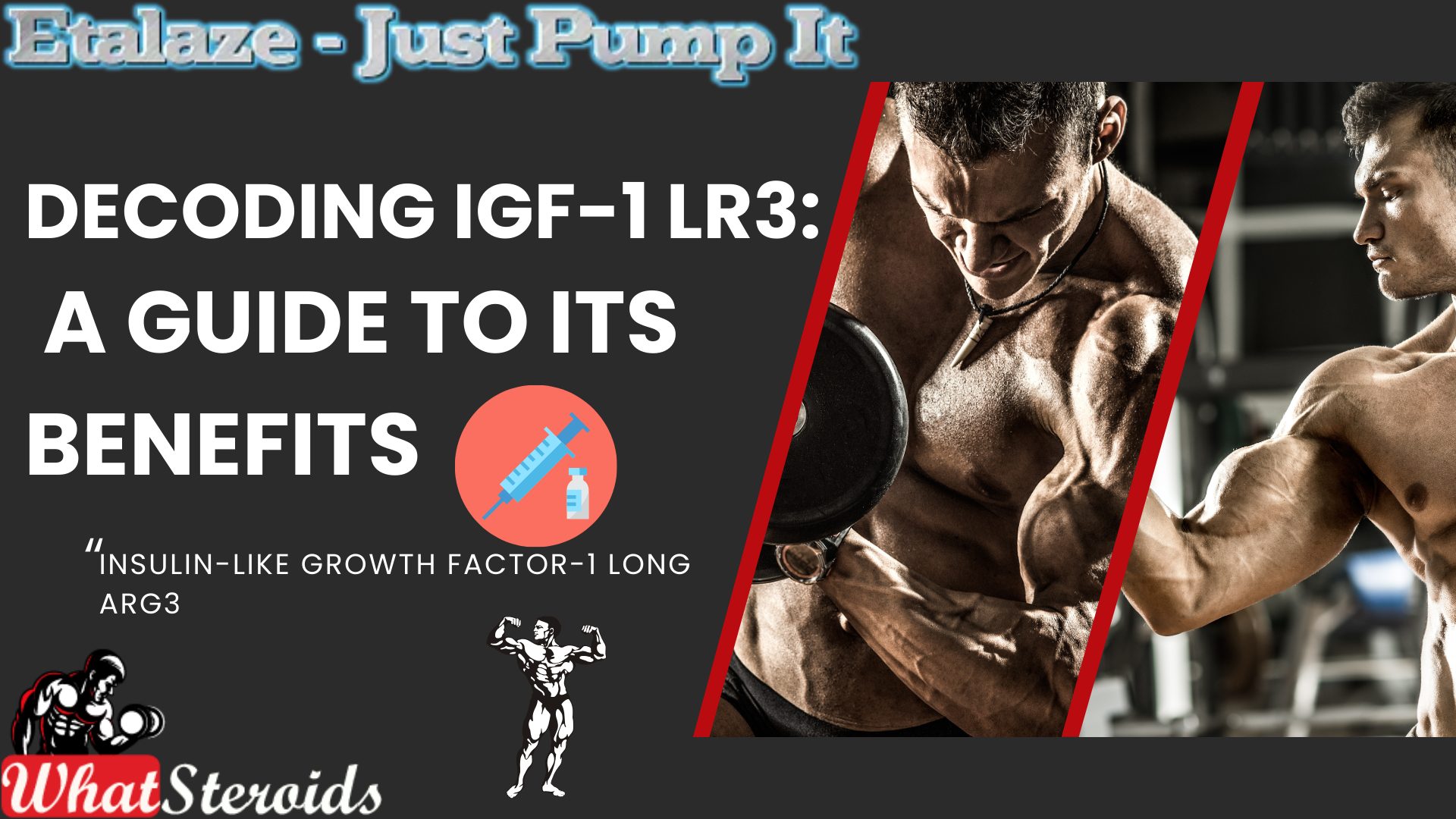
IGF-1 LR3 (Insulin-like Growth Factor-1 Long Arg3) is a synthetic variant of IGF-1, a hormone produced by the liver in response to growth hormone (GH). Unlike GH, which works indirectly, IGF-1 directly facilitates the growth and repair of muscle cells.
Related Article: Ostarine for Beginners; The Ultimate Guide
This modified version of IGF-1 is engineered to avoid binding with IGF-binding proteins, extending its half-life to 20–30 hours. As a result, it remains active in the body significantly longer than natural IGF-1.
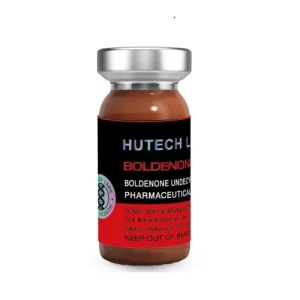 Click here to BuyBoldenone 300 by Hutech
Click here to BuyBoldenone 300 by Hutech
Many performance athletes incorporate IGF-1 LR3 post-workout to enhance muscle growth, speed up recovery, and support fat loss. When injected into specific muscle groups, it often produces localized effects. Additionally, it helps with nutrient distribution and, in some cases, improves insulin sensitivity.
On the other hand, human growth hormone (HGH) operates more broadly and indirectly, stimulating the liver to produce IGF-1 and offering more systemic benefits such as improved skin health, joint support, and fat reduction, albeit at a slower pace.
Typical IGF-1 LR3 doses range from 20–50 mcg daily, administered subcutaneously or intramuscularly, often following a workout.
Key Features of IGF-1 LR3
Enhanced Bioavailability: It avoids binding with IGF-binding proteins, increasing its potency.
Muscle Growth & Repair: Directly stimulates muscle cell proliferation and differentiation.
Improved Nutrient Distribution: Helps shuttle nutrients into muscle cells, supporting recovery.
Potential Fat Loss Benefits: Some users report improved insulin sensitivity and fat metabolism.
Mechanism of Action
IGF-1 LR3 interacts with IGF-1 receptors on muscle cells, activating pathways like PI3K-AKT and MAPK, which are crucial for cell growth and regeneration. This makes it a powerful tool for bodybuilders and athletes looking to optimize recovery and muscle development.
What Are the Top 10 Alternatives to IGF-1 LR3?
Here are some of the top alternatives to IGF-1 LR3, each with unique benefits for muscle growth, recovery, and performance:
BPC-157 – Known for its regenerative properties, it enhances healing and tissue repair.
CJC-1295 – A growth hormone-releasing peptide that boosts GH levels for muscle development.
Ipamorelin – Stimulates GH release with minimal side effects, making it a safer option.
MK-677 (Ibutamoren) – A potent GH secretagogue that promotes muscle growth and fat loss.
Sermorelin – Encourages natural GH production, supporting recovery and lean muscle gains.
Tesamorelin – Primarily used for fat loss, but also aids in muscle preservation.
Follistatin-344 – Inhibits myostatin, allowing for increased muscle hypertrophy.
PEG-MGF (Pegylated Mechano Growth Factor) – Enhances muscle repair and growth post-exercise.
GHRP-6 – Stimulates appetite and GH release, supporting muscle mass gains.
GHRP-2 – Similar to GHRP-6 but with fewer hunger-related side effects.
Each of these peptides has distinct mechanisms and benefits.
Must Read: Are Nootropics a Better Option to AAS?
Potential Risks Associated With IGF-1 LR3
IGF-1 LR3 comes with several potential risks, especially for bodybuilders using it to enhance muscle growth. Here are some key concerns:
Hypoglycemia (Low Blood Sugar) – IGF-1 LR3 increases glucose uptake in muscle cells, which can lead to dangerously low blood sugar levels if not managed properly.
Organ Growth – Since IGF-1 affects all tissues, excessive use may lead to unwanted growth in organs, increasing health risks.
Cancer Risk – IGF-1 plays a role in cell proliferation, and elevated levels have been linked to an increased risk of certain cancers.
Water Retention & Edema – Some users experience bloating and fluid retention, which can affect performance and aesthetics.
Joint Pain & Stiffness – Excessive IGF-1 levels may contribute to joint discomfort due to increased tissue growth.
Cardiovascular Issues – There is some concern that IGF-1 LR3 could contribute to heart enlargement or other cardiovascular complications.
Desensitization – Long-term use may reduce the body's natural IGF-1 production, leading to dependency
Overall
IGF-1 LR3's ability to bypass IGF-binding proteins makes it more potent but also increases the likelihood of desensitization with prolonged use. For those considering it, careful dosing and monitoring are crucial to mitigate side effects.
Steroids
AOD-9604: The Fat-Burning Peptide Explained
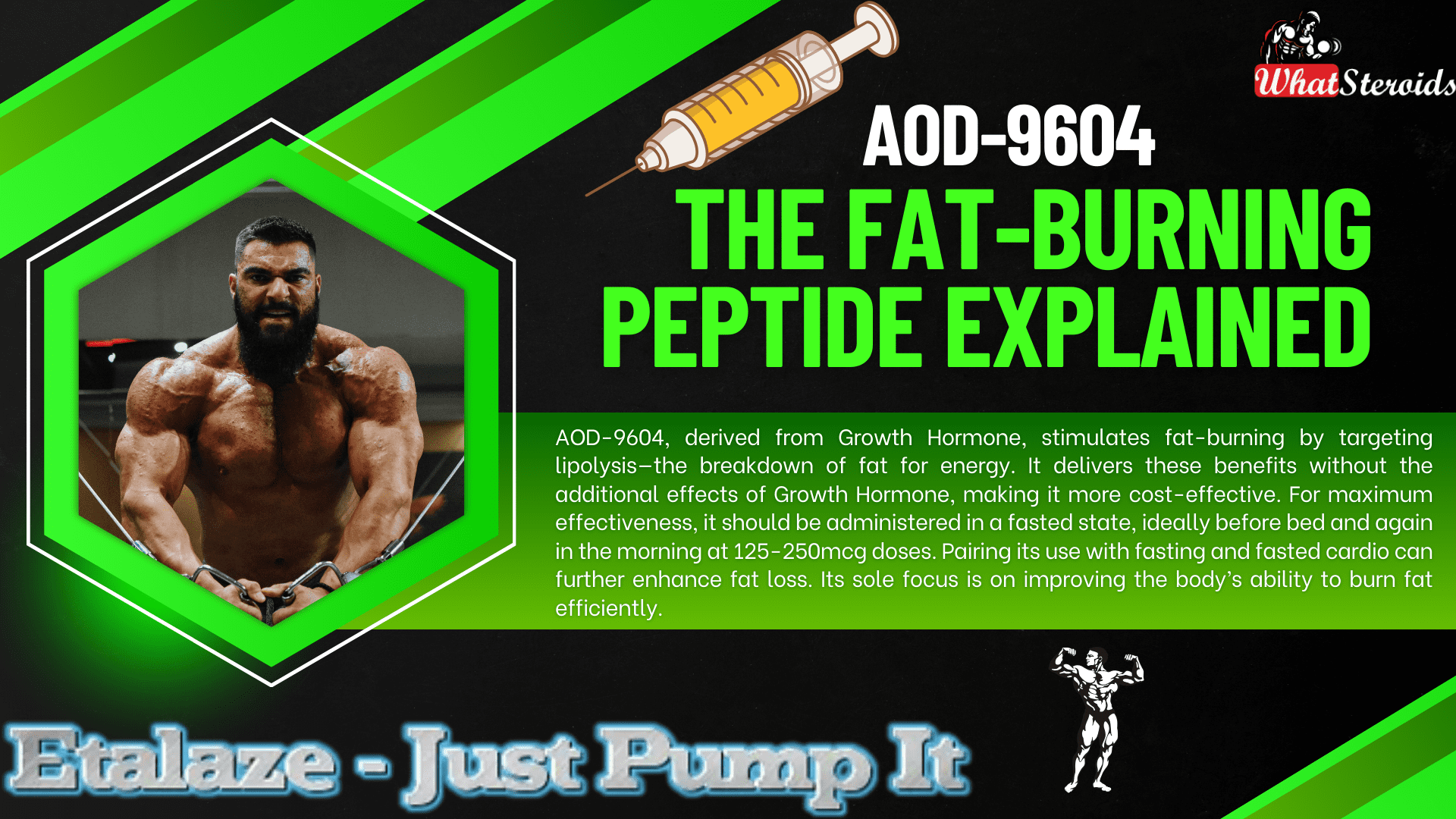
AOD-9604, along with the similar HGH Frag 176-191, is a peptide derived from Growth Hormone that includes only the amino acids in HGH responsible for stimulating fat breakdown, known as lipolysis.
This means that these peptides offer the fat-burning benefits of HGH without its other effects—whether beneficial or adverse—and come at a lower cost.
Related Article: Anavar Cycle for Men and Women
Lipolysis refers to the process where fat cells are broken down to be utilized as energy. AOD-9604 promotes accelerated fat loss by increasing the body's use of fat as fuel.
For optimal results, the peptides should be used in a fasted state. AOD-9604 and Frag 176-191 are most effective when administered at a dose of 125-250mcg before bedtime (at least 3-4 hours after eating) and in the morning at the same dose, followed by a fasting period of 3-4 hours, ideally combined with fasted cardio.
Check Out Dragontropin HGH 100 IU by Dragon Pharma
Similar Peptides with Fat-Burning Effect
Here’s a list of 10 peptides similar to AOD-9604, each with a brief description:
Ipamorelin: A growth hormone-releasing peptide (GHRP) that stimulates the natural release of growth hormone, promoting fat loss, muscle growth, and improved recovery without affecting other hormones like cortisol or prolactin.
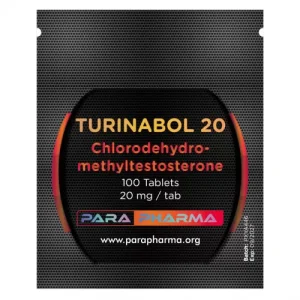 Click Here to Buy: Turinabol 20 by Para Pharma
Click Here to Buy: Turinabol 20 by Para Pharma
CJC-1295: A peptide that increases growth hormone and IGF-1 levels, aiding in fat loss, muscle gain, and improved sleep quality. It has a long half-life, making it convenient for users.
HGH Frag 176-191: A fragment of human growth hormone specifically designed for fat-burning. It targets adipose tissue without the broader effects of full-length HGH.
Tesamorelin: Known for reducing visceral fat, this peptide stimulates the release of growth hormone and is often used for weight management and metabolic health.
BPC-157: While primarily known for healing and recovery, BPC-157 can support fat loss indirectly by improving gut health and reducing inflammation.
Melanotan II: Originally developed for skin tanning, it also has appetite-suppressing properties, making it useful for weight management.
Thymosin Beta-4 (TB-500): Focused on healing and recovery, it can enhance physical performance and indirectly support fat loss through improved activity levels.
GHRP-6: A growth hormone-releasing peptide that boosts appetite and metabolism, aiding in muscle growth and fat loss.
Semaglutide: A GLP-1 receptor agonist that regulates appetite and blood sugar levels, making it effective for weight loss and metabolic health.
MK-677 (Ibutamoren): A growth hormone secretagogue that increases growth hormone and IGF-1 levels, promoting fat loss, muscle gain, and improved recovery.
List of Peptides With a Counteractive Effect Bodybuilders Must Avoid
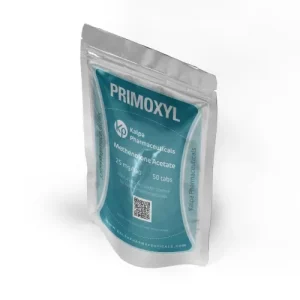 Click Here to Buy Primoxyl 25 by Kalpa Pharmaceuticals
Click Here to Buy Primoxyl 25 by Kalpa Pharmaceuticals
Some peptides can inadvertently lead to fat gain due to their effects on metabolism and appetite regulation. Here are a few that bodybuilders might want to avoid or use cautiously:
- GHRP-6 – While it stimulates growth hormone release, it also significantly increases appetite, which can lead to excess calorie consumption and fat gain.
- IGF-1 LR3 – This peptide enhances muscle growth but can also promote fat storage if not carefully managed with diet and training.
- MK-677 (Ibutamoren) – Though technically a growth hormone secretagogue rather than a peptide, it boosts GH levels but often leads to increased hunger and potential fat accumulation.
- CJC-1295 with DAC – While effective for muscle growth, its prolonged GH release can sometimes lead to unwanted fat retention if not paired with a strict diet
Overall
AOD-9604, derived from Growth Hormone, stimulates fat-burning by targeting lipolysis—the breakdown of fat for energy. It delivers these benefits without the additional effects of Growth Hormone, making it more cost-effective. For maximum effectiveness, it should be administered in a fasted state, ideally before bed and again in the morning at 125-250mcg doses. Pairing its use with fasting and fasted cardio can further enhance fat loss. Its sole focus is on improving the body’s ability to burn fat efficiently.
Read More: How Much Do You Know About B-AET? A Fat Burner You’ve Been Missing
Bodybuilding
Understanding Trenbolone-Induced Cough (“Tren Cough”)

Trenbolone, a potent anabolic steroid, can sometimes cause “tren cough”—a sudden and intense coughing episode shortly after injection. Although not exclusive to Trenbolone, it is more commonly associated with this substance due to its highly irritant nature.
 Click Here To Buy 1-Test Cyp 100 by Nakon Medical
Click Here To Buy 1-Test Cyp 100 by Nakon Medical
Mechanisms Behind Tren Cough
Solvent and Carrier Irritation
Trenbolone formulations often include volatile solvents like benzyl alcohol or benzyl benzoate, which may irritate lung tissues when absorbed quickly into systemic circulation.
Prostaglandin Release
Trenbolone promotes increased production of prostaglandins, particularly PGF2α. This compound triggers contraction in the smooth muscles of the lungs, leading to bronchoconstriction and coughing.
Micro-Oil Embolism
Tiny oil droplets from an injection can reach capillaries and travel to the lungs, causing mild embolic reactions that lead to temporary oxygen deprivation and coughing.
Histamine and Mast Cell Activation
For some individuals, Trenbolone triggers histamine release and mast cell activation, mimicking an allergic response and causing bronchospasms and cough reflexes.
Related Article: Best Syringes for Steroid Injection on Amazon
Using Salbutamol (Albuterol) to Manage Tren Cough
- Salbutamol, a widely-used β2-adrenergic receptor agonist, can alleviate tren cough symptoms by:
- Relaxing bronchial muscles, easing spasms that cause coughing.
- Inhibiting prostaglandin effects, reducing bronchoconstriction associated with PGF2α.
- Opening airways, preventing severe respiratory restrictions in susceptible individuals.
Application Methods
Inhaler (Optimal)
Take 1–2 puffs of salbutamol (100–200 mcg) 5–10 minutes before a Trenbolone injection. If coughing occurs afterward, additional puffs can swiftly resolve the issue.
Oral Tablets (Moderate)
Consuming 2–4 mg tablets 30–60 minutes before injection offers slower, longer-lasting relief but may be less effective than inhalation methods.
Nebulizer (Severe Cases)
For individuals with frequent episodes, nebulized doses of 2.5 mg salbutamol can provide substantial relief.
Preventive Measures to Reduce Tren Cough Risk
- Inject slowly to minimize systemic absorption and irritant effects.
- Split doses to lower reaction severity with smaller quantities.
- Opt for ventrogluteal injection sites, which have fewer blood vessels, reducing oil embolism risk.
- Choose lower-concentration solutions to lessen irritation, as higher concentrations (e.g., Tren Ace 200 mg/ml) are more likely to provoke reactions.
What Other Steroids Can Induce Coughing?
Here's a curated list of peptides, SARMs, and PEDs that may potentially cause coughing or respiratory irritation in bodybuilders and fitness enthusiasts:
Peptides
IGF-1 LR3 (Insulin-like Growth Factor): Known for its anabolic effects, IGF-1 LR3 can occasionally cause mild respiratory irritation due to systemic absorption.
TB-500 (Thymosin Beta-4): While rare, improper injection techniques or high doses may lead to transient coughing episodes.
GHRP-6 (Growth Hormone-Releasing Peptide): This peptide can stimulate histamine release, potentially leading to bronchospasms and coughing.
SARMs (Selective Androgen Receptor Modulators)
RAD-140: (Testolone) Some users report throat irritation or coughing, often attributed to solvents used in liquid formulations.
YK-11: Known for its myostatin-inhibiting properties, YK-11 may cause mild respiratory discomfort in sensitive individuals.
LGD-4033 (Ligandrol): Though uncommon, some users experience coughing due to carrier solvents or allergic-like reactions.
PEDs (Performance-Enhancing Drugs)
Boldenone Undecylenate (Equipoise): This injectable steroid can cause “Equipoise cough,” similar to tren cough, due to oil embolism or irritant solvents.
Testosterone Suspension: The water-based formulation may lead to coughing episodes if injected improperly or absorbed rapidly.
Nandrolone Decanoate (Deca-Durabolin): While less common, coughing can occur due to histamine release or systemic irritation.
More Tips to Minimize Coughing Risks
- Use proper injection techniques to avoid embolic reactions.
- Opt for lower-concentration solutions to reduce irritant effects.
- Consider antihistamines or bronchodilators for individuals prone to respiratory sensitivity.
Read More: Joint Stiffness: How to Manage It While on AAS
Are There Alternatives to Cough-inducing Steroids?
Here are some alternatives to cough-inducing steroids that can provide similar anabolic effects while minimizing respiratory irritation:
Peptides
IGF-1 LR3 (Insulin-like Growth Factor)
Promotes muscle growth and recovery without the irritant properties of certain steroids.
TB-500 (Thymosin Beta-4)
Enhances tissue repair and reduces inflammation, making it a safer option for recovery.
BPC-157 (Body Protection Compound)
Known for its healing properties, it supports muscle repair and joint health.
SARMs (Selective Androgen Receptor Modulators)
RAD-140 (Testolone)
Provides significant muscle-building effects with fewer systemic side effects compared to traditional steroids.
LGD-4033 (Ligandrol)
Boosts lean muscle mass and strength without the risk of respiratory irritation.
MK-677 (Ibutamoren)
Stimulates growth hormone release, aiding in muscle growth and recovery.
Natural Alternatives
Turkesterone
A plant-based ecdysteroid that supports muscle protein synthesis and recovery.
Ecdysterone
Another natural compound that mimics anabolic effects without the harsh side effects.
Creatine Monohydrate
Enhances strength and muscle mass through improved energy production during workouts.
Other Options
Human Growth Hormone (HGH)
Promotes muscle growth and fat loss, though it requires careful monitoring due to potential side effects.
Testosterone Boosters
Natural supplements like D-Aspartic Acid or Tribulus Terrestris can help optimize testosterone levels for muscle growth.
SARMs Alternatives
Legal and safer versions of SARMs are available, offering similar benefits without the risks associated with traditional SARMs.
Overall
We have explored the phenomenon of "tren cough," a sudden, intense coughing episode often caused by Trenbolone injections due to factors like solvent irritation, prostaglandin release, micro-oil embolism, or histamine activation. Preventive measures such as using salbutamol (via inhaler, oral tablets, or nebulizer), injecting slowly, splitting doses, and opting for lower-concentration solutions were highlighted.
Additionally, alternative compounds to tren cough-inducing steroids were discussed, including peptides like IGF-1 LR3 and TB-500, SARMs such as RAD-140 and LGD-4033, and natural options like Turkesterone, ecdysterone, and creatine. These alternatives provide anabolic effects while minimizing respiratory side effects. The conversation also underscored the importance of proper injection techniques and thoughtful compound selection to reduce risks.
-

 Steroids2 years ago
Steroids2 years agoShavers and Other Body Grooming Equipment for Bodybuilders In 2023
-

 Steroids2 years ago
Steroids2 years agoChatGPT and Other Avenues to Find Great Bodybuilding Coaches
-

 Steroids2 years ago
Steroids2 years agoBest Oil Recommendations Before Competition for Subtle Shimmer
-

 Steroids2 years ago
Steroids2 years agoPowerlifting Vs Power Building: Find Out the Big Difference and When to Shift Between the Two
-

 Nutrition2 years ago
Nutrition2 years agoEverything Nutritional Food: What’s Too Much Or Too Little
-

 Bodybuilding Products1 year ago
Bodybuilding Products1 year agoTelmisartan In Bodybuilding: An Expert’s Advice
-

 Bodybuilding8 months ago
Bodybuilding8 months agoPrimal Movements: Our Ultimate Guide for Maximum Results
-

 Anabolic Steroids10 months ago
Anabolic Steroids10 months agoJoint Stiffness: How to Manage It While on AAS
-

 Bodybuilding1 year ago
Bodybuilding1 year agoChia Seeds in A Bodybuilder’s Diet: An Expert’s Advice
-

 Steroids1 year ago
Steroids1 year agoAnadrol Cycle: Benefits, Doses, Alternatives, etc.
-

 Anabolic Steroids1 year ago
Anabolic Steroids1 year agoLegality of Anabolic Steroids In Latin America
-

 Beginners2 years ago
Beginners2 years agoTren Cycle for Beginners
-

 Bodybuilding9 months ago
Bodybuilding9 months agoHow Effective is Bone Broth for Recovery?
-

 Steroids10 months ago
Steroids10 months agoOmnitope (Oxytocin)
-

 Bodybuilding1 year ago
Bodybuilding1 year agoHow Much Is Too Much Cardio? Understanding Heart Rate Zones
-

 Bodybuilding1 year ago
Bodybuilding1 year agoList of FDA-Approved Peptides
-

 Steroids9 months ago
Steroids9 months agoSleeping Positions for Effective Muscle Recovery
-

 Bodybuilding2 years ago
Bodybuilding2 years agoCompetition Prep Cycle for Pro Bodybuilders
-

 Bodybuilding1 year ago
Bodybuilding1 year agoCalorie Dumping: A Bodybuilder’s Guide
-

 Bodybuilding8 months ago
Bodybuilding8 months ago2nd Edition of Natural Bodybuilding Competition Facts
-

 Bodybuilding1 year ago
Bodybuilding1 year agoDemystifying Hypertrophy Training
-

 Bodybuilding9 months ago
Bodybuilding9 months agoAre Nootropics a Better Option to AAS?
-

 Anabolic Steroids12 months ago
Anabolic Steroids12 months agoHow Much Do You Know About B-AET? A Fat Burner You’ve Been Missing
-

 Steroids4 months ago
Steroids4 months agoOstarine For Beginners: The Ultimate Guide
-

 Product Reviews12 months ago
Product Reviews12 months agoTop Vitamins for Skin Health

